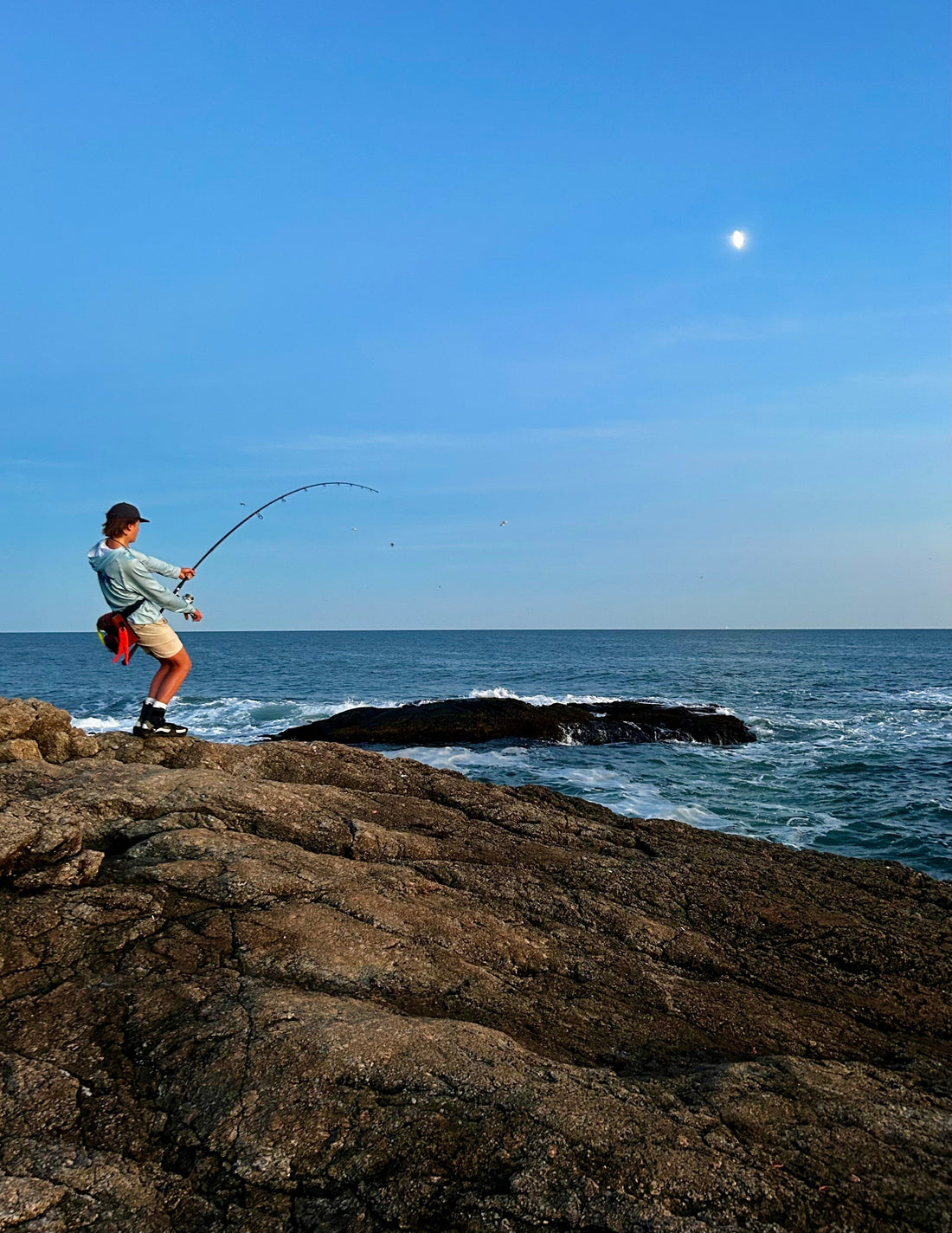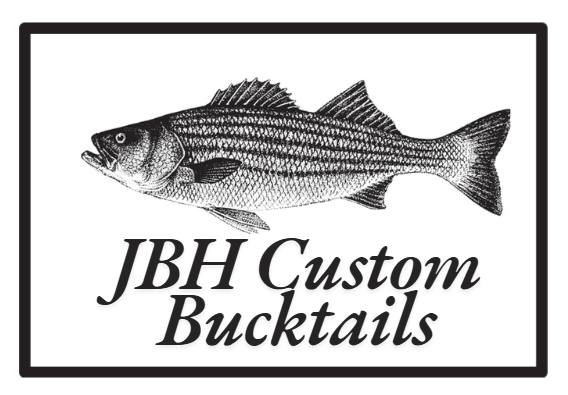
Chasing Shadows: How Striped Bass Feed Under Different Moon Phases
Share
How Moon Phases Affect Night Fishing for Striped Bass
Surfcasting at night for striped bass is a game of patience, precision, and understanding the conditions. One of the biggest factors I’ve learned to pay attention to is the moon phase—it can make or break a night on the water. Over time, I’ve noticed clear patterns in how striped bass behave under different lunar conditions, and adjusting my approach accordingly has led to some of my largest bass.
Full Moon: Bright Nights, Cautious Striped Bass
A full moon lights up the surf, making it easier to see structure, bait movement, and even the wake of a cruising bass. But with all that visibility, striped bass tend to be more cautious. They can easily spot unnatural movements, so stealth is key—I use a slow, natural retrieve and downsize my leader to a lighter breaking strain.
Bucktail selection also matters. Instead of flashy, bright colors, I’ve had better success using darker bucktails like the **JBH Galaxy, Grape, Rock Crawler, and soon to come Night Watch 2.0 **, which creates a solid silhouette against the bright moon. You can also add a pork rind which will add subtle movement without spooking wary fish.
Another thing I’ve learned about full-moon nights is that bass tend to hold deeper because they don’t need to rely on shadows for ambushing prey. Fishing deeper pockets near troughs and cuts in the sand and boulder fields has been more productive than working the shallows.
New Moon: Total Darkness, Aggressive Strikes
Fishing during a new moon is the complete opposite—pitch black conditions make striped bass much more aggressive. With less visibility, they rely more on their lateral line to sense movement and vibrations, meaning louder and more noticeable presentations work best.
On these nights, I prefer using white bucktails or ones with a little glow in the dressing, such as the **JBH White After Burner**. Even though the base color of the lure is white, the large profile with the 7 plus inch hackle adds to making a large, attention striking baitfish alike profile.
This is also when striped bass move in closer to shore, using the darkness to ambush baitfish in the wash. I focus on fishing right in the white water where waves are breaking, making shorter, more precise casts instead of bombing it way out.
Quarter & Crescent Moons: Balanced Conditions
Some of my most consistent fishing happens around the first and last quarter moons. These nights provide just enough light for bass to see well, but not so much that they become overly cautious. Striped bass remain actively hunting, and their behavior feels more predictable.
I use a mix of bucktail colors depending on water clarity—white or chartreuse in murky water, and black or purple in clearer conditions. The **JBH Classic Red and White ** has been one of my best all-around choices for these nights, paired with a Fat Cow Jig Strip for extra movement.
Final Thoughts: Timing It Right
No matter the moon phase, tides still play the biggest role in whether the fish are feeding. But adjusting my lure selection, retrieve, and location based on the moon has made a huge difference in my night fishing success.
- Full Moon = Deeper fish, slow & natural retrieve, darker bucktails
- New Moon = Aggressive fish, louder presentations, glowing/white bucktails
- Quarter Moons = Balanced approach, mix of colors, steady action
If you’re serious about surfcasting at night, pay attention to the moon cycle, track your results, and fine-tune your strategy. The right moon phase combined with the right bucktail could mean the difference between a skunk and a trophy fish.
ALL WROTE IS IN THE AUTHORS OPNION, IF YOU HAVE ANY FEED BACK DROP A COMMENT.
Thanks for the read.
